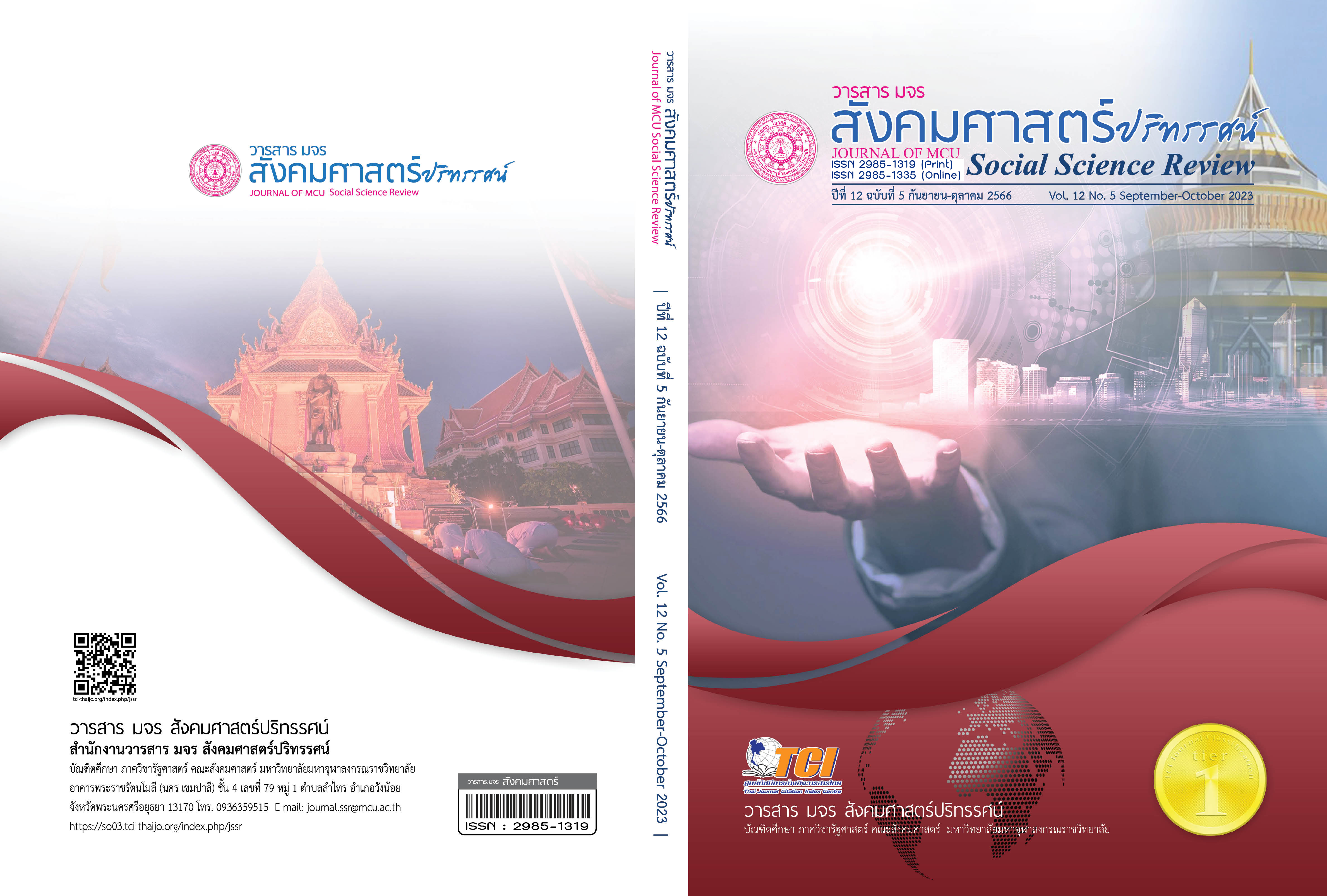การศึกษาเปรียบเทียบวัฒนธรรมการบริโภคชาระหว่างคนไทยและคนเกาหลี
คำสำคัญ:
วัฒนธรรม, อารมณ์, ชาเขียว, ผู้บริโภคคนเกาหลี, ผู้บริโภคคนไทยบทคัดย่อ
งานวิจัยนี้มีวัตถุประสงค์เพื่อศึกษาพฤติกรรม ทัศนคติ และปัจจัยที่มีอิทธิพลต่อความต้องการของผู้บริโภคชาร่วมกับคำคุณศัพท์ทางด้านอารมณ์และความรู้สึก และเปรียบเทียบวัฒนธรรมในการบริโภคชาระหว่างคนไทยและคนเกาหลี โดยการสนทนากลุ่มกับผู้บริโภคทั้งคนไทย จำนวน 20 คน และคนเกาหลี จำนวน 20 คน พบว่าอารมณ์ของผู้บริโภคคนไทยที่มีคะแนนสูง คือ Good Happy และ Pleasant ในขณะที่อารมณ์ของผู้บริโภคคนเกาหลีที่มีคะแนนสูง คือ Peaceful Good และ Warm อารมณ์ที่เกิดขึ้นนี้สอดคล้องกับผลสำรวจจากผู้บริโภคทั้งคนไทย จำนวน 424 คน และคนเกาหลี จำนวน 424 คน โดยใช้แบบสอบถาม ซึ่งผู้บริโภคคนเกาหลีจะมีการแสดงออกทางอารมณ์โดยรวมที่ชัดเจนกว่าผู้บริโภคคนไทย ในส่วนของข้อมูลเชิงทัศนคติของทั้ง 2 ประเทศ พบว่ารสชาติของเครื่องดื่มชา เป็นปัจจัยที่มีความสำคัญที่สุด รองลงมา คือ กลิ่นของเครื่องดื่มชา จากการประเมินคุณภาพทางประสาทสัมผัสกับผู้บริโภคคนไทย จำนวน 100 คน และคนเกาหลี จำนวน 100 คน กับชาเขียวทางการค้า 2 ตัวอย่าง (ชาเขียวไทย และชาเขียวเกาหลี)
ผลการวิจัยพบว่า ผู้บริโภคทั้งคนไทยและคนเกาหลีให้คะแนนความชอบโดยรวมไม่แตกต่างกัน จากการวิเคราะห์องค์ประกอบ พบว่าผู้บริโภคคนไทยจะมีความสัมพันธ์กับอารมณ์และความรู้สึกทั้งเชิงบวกและลบ ส่วนผู้บริโภคคนเกาหลีจะมีความสัมพันธ์กับอารมณ์เชิงบวกเป็นส่วนใหญ่ สรุปได้ว่าพฤติกรรม และทัศนคติของผู้บริโภคในแต่ละประเทศที่มีวัฒนธรรมที่แตกต่างกันจะส่งผลให้การแสดงออกทางอารมณ์ของผู้บริโภคที่ดื่มชาไม่เหมือนกัน
เอกสารอ้างอิง
Addinsoft. XLSTAT Statistical and data analysis solution. Retrieved March 20, 2022, from https://www.xlstat.com
Breus, M. J. (2013). New details on caffeine’s sleep-disrupting effects. Retrieved March 20, 2022, from https:// www.thesleepdoctor.com/proof-caffeine
Burleson, B. R. (2003). The experience and effects of emotional support: What the study of cultural and gender differences can tell us about close relationships, emotion, and interpersonal communication. Personal Relationships, 10, 1–23.
Chon, D. (2007). Korean Cuisine and Food Culture (Special Edition) Exploring the Flow of East Asian Food Culture. Retrieved March 20, 2022, from www.kikkoman.com/jp/kiifc/foodculture/pdf
Hu, X., & Lee, J. (2018). Emotions elicited while drinking coffee: a cross-cultural comparison between Korean and Chinese consumers. Food Quality and Preference, 76, 160-168.
Kanjanakorn, A. & Lee, J. (2017). Examining emotions and comparing the EsSense Profile and the Coffee Drinking Experience in coffee drinkers in the natural environment. Food Quality and Preference, 56, 69–79.
Kaplan, U. (2017). From the tea to the coffee ceremony: Modernizing Buddhist material culture in contemporary Korea. The Journal of Objects, Art, and Belief, 13(1), 1-22.
Kiatkawsin, K. & Han, H. (2017). An alternative interpretation of attitude and extension of the value–attitude–behavior hierarchy: the destination attributes of Chiang Mai, Thailand. Asia Pacific Journal of Tourism Research, 22(5), 481-500.
King, S. C., & Meiselman, H. L. (2010). Development of a method to measure consumer emotions associated with foods. Food Quality and Preference, 21(2), 168-177.
Lee, J. & Chambers, D. H. (2010). Descriptive analysis and U.S. consumer acceptability of 6 green tea samples from China, Japan, and Korea. Journal of Food Science, 75(Nr 2), S141-S147.
Lee, J., et al. (2010). Consumer acceptance for green tea by consumers in the United States, Korea, and Thailand. Journal of Sensory Studies, 25, 109-132.
Lee, K. H., et al. (2017). Green tea quality attributes: a cross-cultural study of consumer perceptions using importance–performance analysis (IPA). Journal of Foodservice Business Research, 21(2), 218-237.
Markus, H. R. & Kitayama, S. (1991). Culture and the self: Implications for cognition emotion and motivation. Psychological Review, 98(2), 224–53.
Mesquita, B. (2001), Emotions in collectivistic and individualistic contexts. Journal of Personality and Social Psychology, 80(1), 68–74.
Na, H., et al. (2022). Consumption of coffee and green tea and the risk of colorectal cancer in Korea: The health examinees study. Journal of Cancer Prevention, 27(4), 229-238.
Pinsuwan, A., et al. (2022). Sensory drivers of consumer acceptance purchase intent and emotions toward brewed black coffee. Foods, 180, 1-16.
Shaver, P., et al. (1987). Emotion knowledge: further exploration of a prototype approach. Journal of Personality and Social Psychology, 52(6), 1061-1086.
Songsamoe, S., et al. (2019). Understanding consumer physiological and emotional responses to food productsusingelectroencephalography (EEG). Trends in Food Science & Technology, 93, 167–173.
Submahachok, P. & Praditsangthong, P. (2023). Factors affecting oolong tea purchasing decision: A case study of consumers in Bangkok, Thailand. PSAKU International Journal of Interdisciplinary Research, 12(1), 1-7.
Suwanamas, C., et al. (2015). The effect of perceived service quality on customer emotions, customer satisfaction and customer loyalty: a PLS-SEM approach towards a luxury hotel in Bangkok, Thailand. Journal Global Business Advancement, 8(4), 374-398.
Zablocki, A., et al. (2019). Emotions Within online reviews and their Influence on product attitudes in Austria, USA, and Thailand. Journal of Interactive Marketing, 46, 20–39.
Zhao, C.-N., et al. (2019). Phenolic profiles and antioxidant activities of 30 tea Infusions from green, black, oolong, white, yellow, and dark teas. Antioxidants, 8, 1-15.
ดาวน์โหลด
เผยแพร่แล้ว
รูปแบบการอ้างอิง
ฉบับ
ประเภทบทความ
สัญญาอนุญาต
ลิขสิทธิ์ (c) 2023 วารสาร มจร สังคมศาสตร์ปริทรรศน์

อนุญาตภายใต้เงื่อนไข Creative Commons Attribution-NonCommercial-NoDerivatives 4.0 International License.
เพื่อให้เป็นไปตามกฎหมายลิขสิทธิ์ ผู้นิพนธ์ทุกท่านต้องลงลายมือชื่อในแบบฟอร์มใบมอบลิขสิทธิ์บทความให้แก่วารสารฯ พร้อมกับบทความต้นฉบับที่ได้แก้ไขครั้งสุดท้าย นอกจากนี้ ผู้นิพนธ์ทุกท่านต้องยืนยันว่าบทความต้นฉบับที่ส่งมาตีพิมพ์นั้น ได้ส่งมาตีพิมพ์เฉพาะในวารสาร มจร สังคมศาสตร์ปริทรรศน์ เพียงแห่งเดียวเท่านั้น หากมีการใช้ภาพหรือตารางหรือเนื้อหาอื่นๆ ของผู้นิพนธ์อื่นที่ปรากฏในสิ่งตีพิมพ์อื่นมาแล้ว ผู้นิพนธ์ต้องขออนุญาตเจ้าของลิขสิทธิ์ก่อน พร้อมทั้งแสดงหนังสือที่ได้รับการยินยอมต่อบรรณาธิการ ก่อนที่บทความจะได้รับการตีพิมพ์ หากไม่เป็นไปตามข้อกำหนดเบื้องต้น ทางวารสารจะถอดบทความของท่านออกโดยไม่มีข้อยกเว้นใดๆ ทั้งสิ้น





